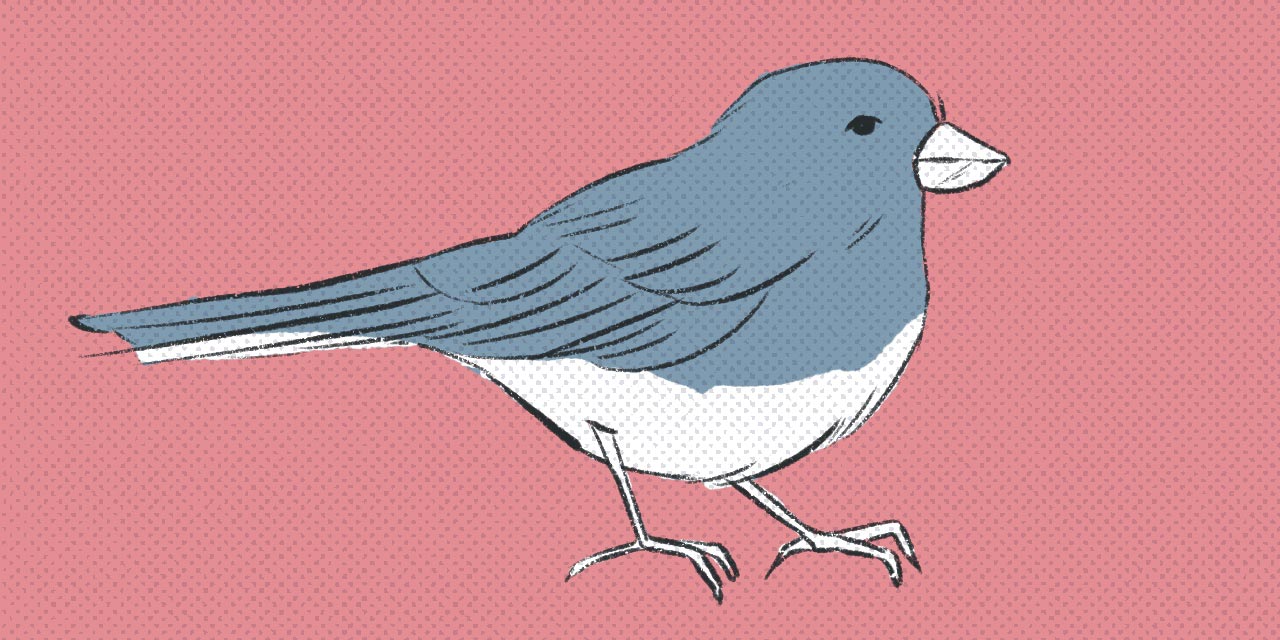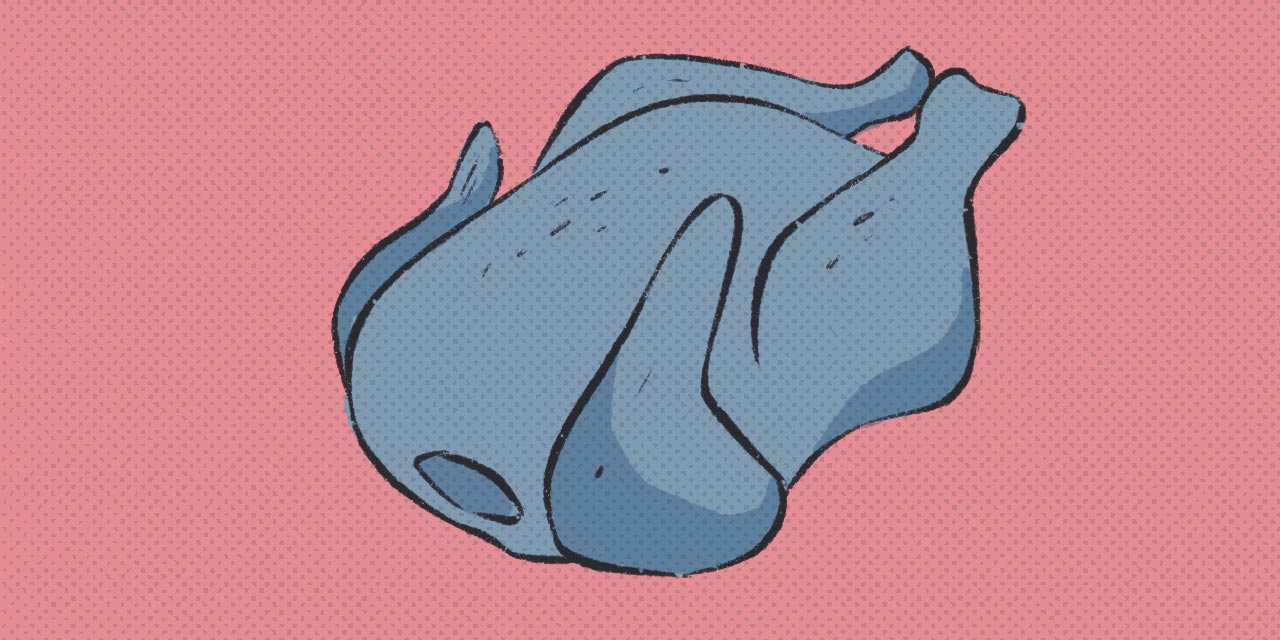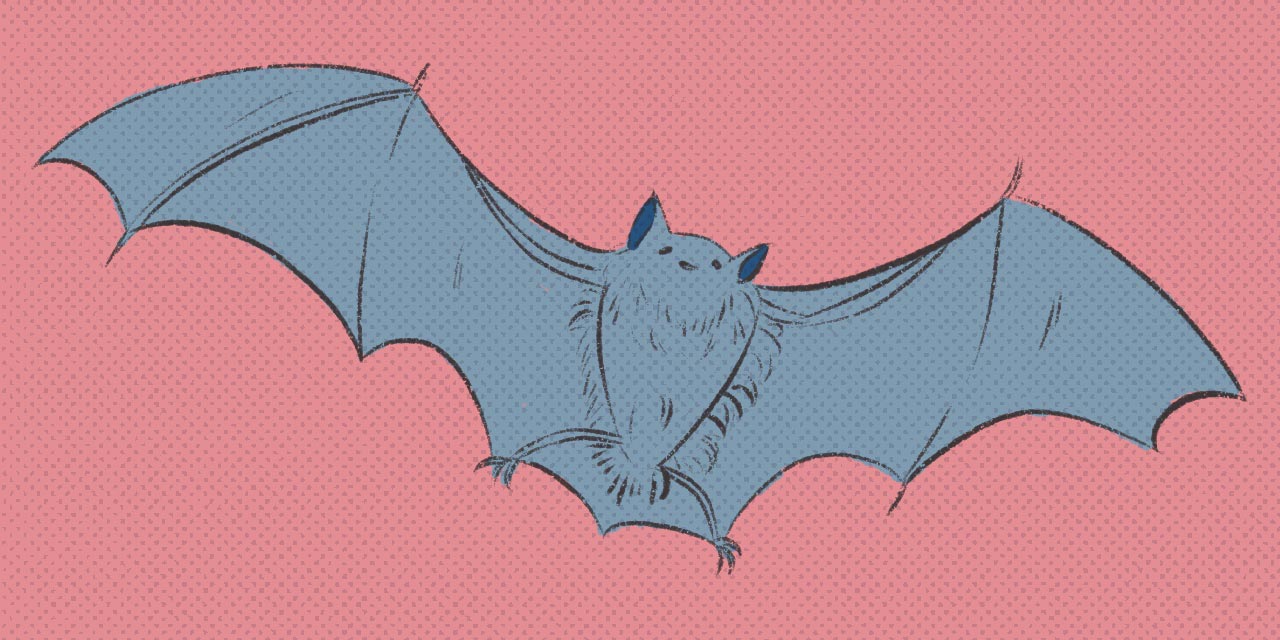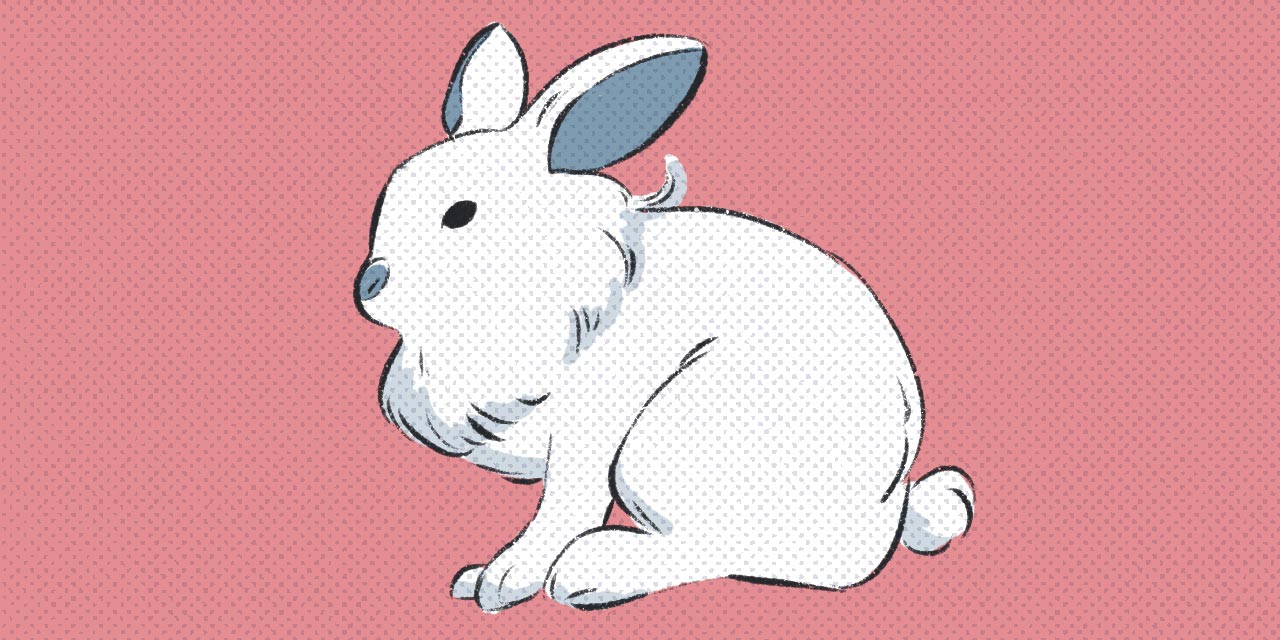In most cases, the Japanese counter 羽 (わ/wa) counts something that's easy to identify: birds.
In most cases, the Japanese counter 羽 (わ/wa) counts something that's easy to identify: birds. The kanji 羽 means "wings," and while all birds have wings, 羽 is also used to count a few non-bird exceptions, including bats and rabbits. We'll talk about these details in a moment. Be aware, though, that plenty of things with wings don't get counted using 羽: flying insects, winged monsters, and flying dinosaurs, for example, are all counted with 匹 (ひき) or 頭 (とう).
- Counting with the Japanese Counter 羽
- The Things You Can Count with the Counter 羽
- Now You're Not Just WING-ing It
Counting with the Japanese Counter 羽
Before we get into the details of 羽, however, let's take a look at its pronunciation table so you can learn to count all those parrots you have living in your home!
| Numeral | Japanese | Reading 1 | |
|---|---|---|---|
| 1 | 一羽 | いちわ | |
| 2 | 二羽 | にわ | |
| 3 | 三羽 | さんわ/さんば | |
| 4 | 四羽 | よんわ/よんば (よわ) | |
| 5 | 五羽 | ごわ | |
| 6 | 六羽 | ろくわ (ろっぱ) | |
| 7 | 七羽 | ななわ (しちわ) | |
| 8 | 八羽 | はちわ (はっぱ) | |
| 9 | 九羽 | きゅうわ | |
| 10 | 十羽 | じゅうわ/じゅっぱ (じっぱ) | |
| 11 | 十一羽 | じゅういちわ | |
| 12 | 十二羽 | じゅうにわ | |
| 100 | 百羽 | ひゃくわ/ひゃっぱ | |
| 1,000 | 千羽 | せんわ/せんば | |
| 10,000 | 一万羽 | いちまんわ/いちまんば | |
| how many | 何羽 | なんわ/なんば |
Unlike some Japanese counters, the pronunciation for 羽 can be tricky, and occasionally downright strange. We'll go over some of the exceptional numbers below. (If you'd like a general explanation of counters and how to count with them, take a look at our handy Japanese Counters guide.)
3 Birds: さんわ vs さんば
Both さんわ and さんば are common. In the case of the idiom 三羽烏 (さんばがらす), meaning a "distinguished trio," the reading is always ば.
- 三羽の孔雀を飼っている。
- I have three peacocks.
- あの三人は、日本語学習教材界の三羽烏と呼ばれている。
- Those three are called "the three most able persons in the Japanese learning resource world."
4 Birds: よわ vs よんわ vs よんば
While よんわ is the most common pronunciation, よんば is listed as the preferred reading in the NHK Accent Dictionary. It's unlikely you'll run into よわ, which is becoming archaic.
- ヒヨコが四羽逃げ出した。
- Four baby chickens ran away.
- この絵のどこかに、ペンギンが四羽描かれています。
- Somewhere in this painting, you'll see four penguins.
6 Birds: ろくわ vs ろっぱ
Both are correct, although ろくわ is more common.
- 六羽のセキセイインコがピイピイ鳴いていた。
- Six parakeets were chirping.
- 木の上から、六羽の大ガラスがこちらを見下ろしていた。
- There were six ravens looking down on us from the tree.
7 Birds: ななわ vs しちわ
Because the reading しちわ sounds a little like いちわ (1羽), it's more common to read 7羽 as ななわ. Both are technically correct, however.
- 七羽の鶏が卵を産んだ。
- Seven chickens laid eggs.
- そこには、美しい七羽のフラミンゴが佇んでいた。
- Seven beautiful flamingos were standing there.
8 Birds: はちわ vs はっぱ
Both are correct, but はちわ is more common.
- カナリアが八羽売られていた。
- Eight canaries were for sale.
- 久兵衛は、八羽の九官鳥を飼っている。
- Kyūbei has nine mynahs.
10 Birds: じゅうわ vs じゅっぱ vs じっぱ
All three are correct. じゅうわ is the most common, with じゅっぱ a close second. Still, newsreaders consider じっぱ the correct pronunciation of 10羽, so you may hear it during those news reports about ten birds.
- 水辺では、10羽ほどの鴨が戯れていた。
- At the waterside, about ten ducks were playing around.
- 鳥小屋には十羽の雌鳥がいます。
- There are ten hens in the henhouse.
- ウズラを十羽育てていたことがあります。
- I used to raise ten quails.
100 Birds: ひゃくわ vs ひゃっぱ
While ひゃくわ is more common, newsreaders consider ひゃっぱ the correct pronunciation. In reports that talk about a hundred-plus birds, you may hear that pronunciation instead.
- 百羽以上のカモメが空を舞っていた。
- More than a hundred seagulls were flying in the sky.
- 約百羽のアホウドリに囲まれた。
- I was surrounded by about a hundred albatrosses.
1,000 Birds: せんわ vs せんば
Both せんわ and せんば are common pronunciations, though newsreaders consider せんば to be correct. One thousand paper cranes—those origami birds you fold to aid in someone's recovery from an illness—uses this pronunciation. They're called 千羽鶴 (せんばづる) in Japanese.
- その湖には千羽の白鳥がいた。
- In the lake, there were a thousand swans.
- みんなで千羽鶴を折った。
- We made a thousand origami cranes.
10,000 Birds: いちまんわ vs いちまんば
いちまんば is more common than いちまんわ, though いちまんば is the one that's considered more correct.
- そこは、一万羽以上のペンギンが暮らすペンギン王国でした。
- That was the Penguin Kingdom, where over ten thousand penguins live.
- ここには、約一万羽のコンドルが暮らしていると言われています。
- It's said about ten thousand condors are living here.
How Many Birds?: なんわ Vs なんば
In asking about the number of birds somewhere, combine 何 with the counter 羽; the pronunciation can be either なんわ or なんば, though both are common.
- アヒルは何羽いますか?
- How many ducks are there?
- 今までに、ミミズクを何羽見たことがありますか?
- How many horned owls have you seen before?
The Things You Can Count with the Counter 羽
With these pronunciation exceptions addressed, let's talk about the uses for this counter. 羽 is the counter for birds. But 羽 is also used to count bats and rabbits. Bats, which are pretty bird-like, make sense. But… rabbits?
Birds

You can use the Japanese counter 羽 to count pretty much any kind of bird. Even birds that can't fly—as long as they're smaller, like penguins and kiwis—fit this category. (More about certain bigger flightless birds in a moment.)
- ピンク色のオウムが一羽逃げてしまった。
- One pink-colored parrot escaped.
- 電線に雀が三羽止まっている。
- There are three sparrows on the power line.
- 湖の畔に、十羽のガチョウがいた。
- There were ten geese on the edge of the lake.
Very, very big birds, like ostriches and emus, may be counted using the big animal counter 頭. And you would probably count Big Bird, the Sesame Street character, using the person counter 人 (にん/り), since he's a monster who's friendly to people.
Bird Meat

Once a live bird turns into meat, the method of counting it changes.
Okay, so you can count (almost) any bird with 羽. But what about bird meat? It's technically still bird, right? There's nothing more 羽 than buffalo wings! (Buffaloes are counted with 頭, the big animal counter. 🙃)
Once a live bird turns into meat, the method of counting it changes. Take chicken, for example: small pieces of its meat, like chicken meatballs or chicken nuggets, are counted using the counter 個 (こ). Slices, if they're flat enough, may be counted with the flat-and-long things counter 枚 (まい). Drumsticks or wings, which can be stretched out to be long, might be counted with the long things counter 本 (ほん). If the chicken meat comes in a package, you'd probably count it using パック.
- 唐揚げ30個を揚げた。
- I deep-fried thirty pieces of karaage.
- 鶏胸肉2枚で298円だって。
- It says two slices of chicken breast for ¥298.
- 手羽先を一人で三十三本食べた。
- I ate thirty-three chicken wings by myself!
Yet there's still one situation in which a once-live bird, now meat, is still counted using 羽. We'll give you a hint: think "Thanksgiving."
- 七面鳥、一羽まるごとうちのオーブンに入るかな?
- I wonder, will the whole turkey fit in our oven?
That's right: when the chicken, duck, turkey, quail, or any other bird is considered to be meat but still whole, you continue to use 羽.
Bats

Bats aren't birds, but they still have wings. Remember the kanji: 羽. They too are counted with this counter. It makes sense!
- この洞窟には百羽以上のコウモリがいます。
- There are over a hundred bats in this cave.
Batman, on the other hand, would be counted with the 人 counter, most likely. The infamous Batman villain Man-Bat, however, would probably be counted with 匹—the animal/monster counter.
Rabbits

While we mentioned above that rabbits are counted with 羽, these days the small animal counter 匹 is more common. Still, you'll still see this done often enough that it's worth learning.
- 学校でウサギを3羽飼育しています。
- We keep three rabbits at our school.
But hold on. They don't have wings, so why are rabbits included in the birds category? No one knows for sure. One theory is that back in the day, monks were allowed to eat birds but not other kinds of meat. They added rabbits to the bird category so that they could start eating these delicious, hopping meat-sacks.
Another theory is that someone somewhere thought a rabbit's ears looked like wings and put them on the 羽 list. While it's a little ridiculous, we actually prefer this theory, because 🐰🐰🐰 are cute and furry, and we don't want to think about them getting eaten. Whatever the reason, in the end, you'll just have to remember that even though they're wingless and flightless, rabbits are counted using 羽.
Now You're Not Just WING-ing It
The 羽 Japanese counter isn't super complicated, so if you have more energy for another deep dive into counter-land, check out our articles on 冊, 人, and 個.
And if this was your first counters experience, we suggest you read about the basics of Japanese counters, before heading over to the big Japanese counters study list we put together, which also has links to every in-depth counters article we've written up to this point.
-
Cells with multiple entries divided by a
/indicate multiple pronunciations that are equally common. Cells with entries in parentheses indicate that the parenthesized word is an uncommon or archaic pronunciation. ↩
